This article was medically reviewed by Shayne Guffey, DMD. Dr. Shayne Guffey, DMD is a Dentist and the owner of Mountain View Family Dental in Mesa, Arizona. With over 20 years of experience, Dr. Guffey specializes in family dentistry and cosmetic dentistry. He earned his Doctor of Dental Medicine (DDM) from Oregon Health & Science University. Additionally, he’s a professional member of the Academy of General Dentistry and the Dental Organization for Conscious Sedation.
wikiHow marks an article as reader-approved once it receives enough positive feedback. In this case, 88% of readers who voted found the article helpful, earning it our reader-approved status.
This article has been viewed 120,108 times.
Research suggests that you shouldn't need a denture adhesive if your dentures are properly fitted. However, it's totally normal to need an adhesive if you've had your dentures for a long time since your jaw will naturally change shape over time.[1] Studies show that using a denture adhesive makes it easier to chew and talk without worrying about your dentures moving or coming out, so you may prefer to use it even if your dentures fit well.[2] Denture adhesive usually comes in two forms: a paste and a powder. Although using an adhesive can be super helpful if your dentures feel loose, it's not a solution for ill-fitting dentures, so see your prosthodontist if you have fit problems.
Steps
Using a Paste Adhesive
-
1Choose a paste adhesive that is zinc-free. Zinc is often overused in denture adhesives, so much so that zinc-free paste adhesive is now available. Using a paste adhesive that contains zinc combined with a diet high in zinc can lead to excessive zinc in your body and possible health issues.[3]
- If you use a paste adhesive that contains zinc, only use it as directed on the label and do not use too much adhesive.
-
2Clean and dry your dentures. Before you apply adhesive, you need to clean your dentures under running water and your normal denture cleanser. Then, pat them dry. Dry dentures will help the paste adhesive to stay attached to the dentures, and to your gums.
- This will ensure a very stable bite and will prevent food from getting underneath your dentures.
Advertisement -
3Start by applying denture cream to your upper denture. Do not use more denture adhesive than directed on the label. Always begin with a small amount of adhesive so you don’t put too much on your dentures.
- Apply three to four dabs of the paste the size of a pencil eraser to the upper denture, equally distributing the paste on the inside surface. Do not apply the paste too close to the edge of your denture.
-
4Place three to four dabs on your lower denture. The dabs should be no bigger than a pencil eraser and should not be too close to the edge of your denture. Again, make sure the dabs are evenly spaced along the inside surface of the denture.
-
5Put the dentures in your mouth and press them together firmly to keep them in place. If any of the adhesive oozes out on the sides of the dentures, you have used too much adhesive. You may need to remove the dentures, clean off the adhesive and reapply, using less on the upper and lower dentures.
-
6Use only one application a day. If you put the adhesive on your dentures properly, you should not need to reapply the adhesive throughout the day.
- A standard 40 g tube of adhesive should last at least four weeks, a 47 g tube should last five weeks, and a 70 g tube should last at least eight weeks. Avoid overusing the denture adhesive or using too much every day.
Using a Powder Adhesive
-
1Try to buy a powder adhesive that does not contain zinc. Zinc is often overused in denture adhesives. If you have a diet that is high in zinc and/or take vitamins containing zinc, and also use a denture powder containing the mineral, you can experience serious health problems, including nerve damage.[4] Look for powders that are specifically marked asa being zinc-free.
- If you use a powder adhesive that contains zinc, only use it as directed on the label and do not use too much adhesive. Your prosthodontist may also be able to recommend a powder denture adhesive that does not contain zinc.
-
2Clean your dentures. Use your usual denture cleanser to give your dentures a good clean before you apply the adhesive.[5]
- Keep your dentures moist and do not dry them off. The moisture will help the powder adhesive stick to your dentures.
-
3Sprinkle the powder evenly onto the surface of either denture. The key is to distribute the powder in an even layer over your dentures. Shake or vibrate the dentures in your hand to ensure the powder gets on both dentures. Think of this as similar to flouring a cake pan.[6]
-
4Place your dentures in your mouth. Use your thumb and forefinger to press the upper and lower dentures into your mouth.[7]
- Powder adhesives may not make your dentures stay in your mouth as long as paste adhesives. Usually, adhesives are more effective on your upper dentures than on your lower dentures. Liquids and foods can loosen your lower denture, so you may want to consider using a paste adhesive for your lower denture.
Removing Your Dentures and the Denture Adhesive
-
1Take out your dentures if you feel any discomfort or there is excessive adhesive in your mouth. If you feel any pain, tingling, or soreness when you put your dentures in your mouth, or if there is too much adhesive on your dentures, you may need to remove them. You can then try to use the paste adhesive again, or try a different type of adhesive.[8]
- You will also need to remove your dentures at night before going to bed. You should clean your dentures well and place them in a container with water or a commercial denture cleanser.
-
2Rinse your mouth with warm water or mouthwash. Before you remove your dentures, you need to moisten your mouth and remove any food debris from the day.
-
3Take out your lower denture first. Pull gently at your lower denture and move it back and forth in a rocking motion. It should slowly release from your gums.
-
4Remove your upper denture. It may be more difficult to remove your upper denture, as there is a higher surface area for the denture to adhere to.
- Use your thumb to press against the front teeth. Then, press upward and outward with your thumb towards your nose. Your upper denture should dislodge and come out in your hand.
- You can also grab it on the lateral sides and go as deep as possible with your index fingers, then pull it down vertically.
- Do not use any other objects besides your fingers and fingernails to remove your dentures as this could lead to injury.
- If you cannot get your dentures out and you do not want to sleep with them in or keep them in overnight, you may need to seek medical care at the nearest hospital or clinic. You can also contact a 24-hour dental service for assistance.
-
5Clean the adhesive residue from your dentures and your mouth. Don’t leave the adhesive residue on your dentures at the end of the day, as your dentures may not adhere properly the following day when you try to put them in.
- Use your denture cleanser to clean your dentures. Then, combine hot water and toothpaste in a bowl. Use a soft bristled toothbrush to remove the adhesive residue from your dentures.
- You should also use the toothbrush to clean any adhesive residue from your gums, your tongue, and your mouth.
Expert Q&A
Did you know you can get expert answers for this article?
Unlock expert answers by supporting wikiHow
-
QuestionWhen using Poligrip do you have to reapply every day or can you keep in longer?
 Cristian Macau, DDSDr. Macau is an oral surgeon, periodontist, and aesthetician at Favero Dental Clinic in London. He received his DDS from Carol Davila University of Medicine in 2015.
Cristian Macau, DDSDr. Macau is an oral surgeon, periodontist, and aesthetician at Favero Dental Clinic in London. He received his DDS from Carol Davila University of Medicine in 2015.
Doctor of Dental Surgery
-
QuestionHow can I clean off the denture adhesive if it oozes over onto the rest of my gums?
 Cristian Macau, DDSDr. Macau is an oral surgeon, periodontist, and aesthetician at Favero Dental Clinic in London. He received his DDS from Carol Davila University of Medicine in 2015.
Cristian Macau, DDSDr. Macau is an oral surgeon, periodontist, and aesthetician at Favero Dental Clinic in London. He received his DDS from Carol Davila University of Medicine in 2015.
Doctor of Dental Surgery
References
- ↑ https://www.fda.gov/medical-devices/dental-devices/denture-adhesives
- ↑ https://www.ncbi.nlm.nih.gov/pmc/articles/PMC6073946/
- ↑ http://www.fda.gov/MedicalDevices/ProductsandMedicalProcedures/DentalProducts/ucm274258.htm
- ↑ http://www.fda.gov/MedicalDevices/ProductsandMedicalProcedures/DentalProducts/ucm274258.htm
- ↑ https://www.dentalhealth.org/denture-cleaning
- ↑ https://prodentaldallas.com/when-to-use-denture-adhesive-and-how-to-apply-it/
- ↑ https://www.mouthhealthy.org/en/az-topics/d/dentures-partial
- ↑ http://www.fda.gov/MedicalDevices/ProductsandMedicalProcedures/DentalProducts/ucm274258.htm
About This Article
Before you apply denture adhesive, clean your dentures under running water and pat them dry, which will help the adhesive stick to them. Then, use the tube of adhesive to apply 3-4 small dabs the size of a pencil eraser to the inside surface of your upper denture. Avoid putting the paste too close to the edge of your denture or it will ooze out into your mouth. When you're finished, do the same thing to your lower denture, and place them both in your mouth. To help keep your dentures in place, press them together firmly. If any adhesive oozes out when you press them together, take them out, clean them, and reapply more adhesive. For more advice from our Dental co-author, including how to easily remove your dentures at the end of the day, keep reading!

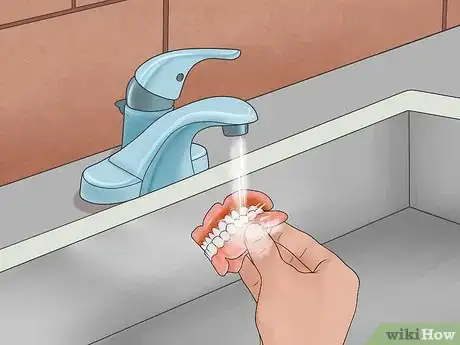
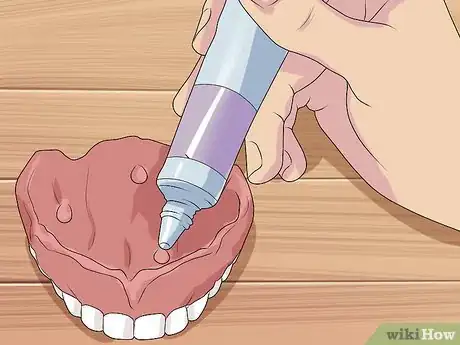
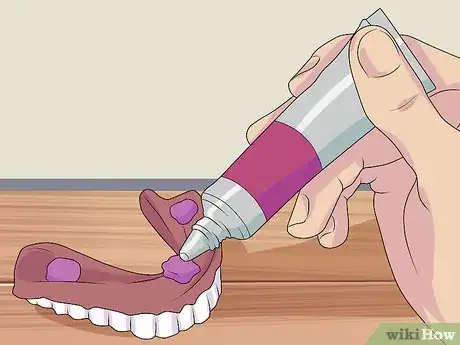
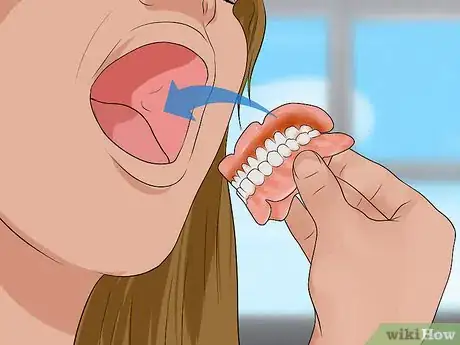
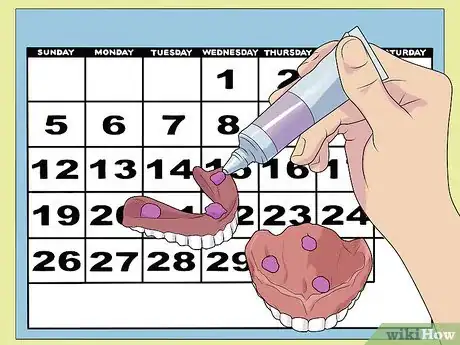
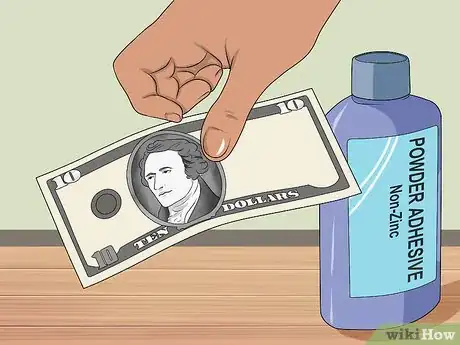
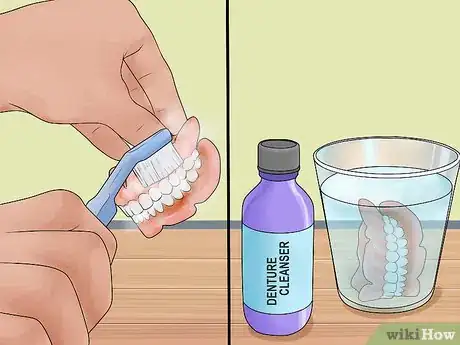
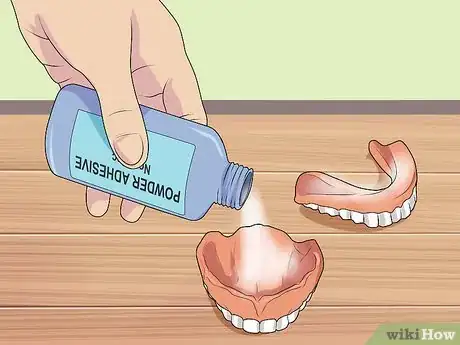
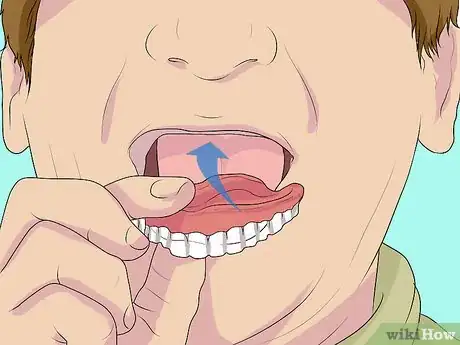
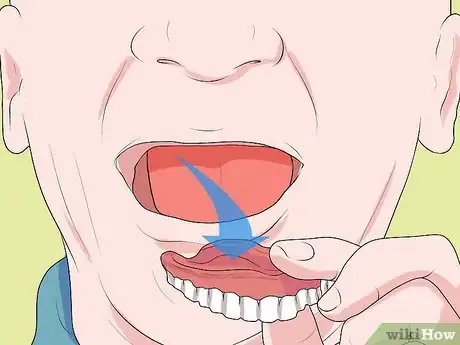

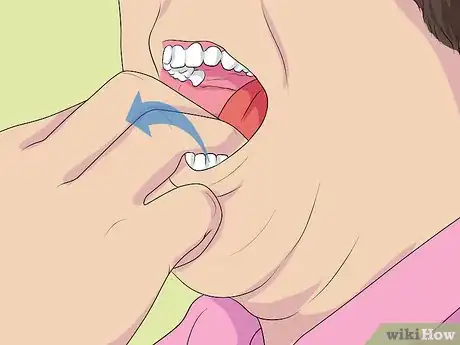

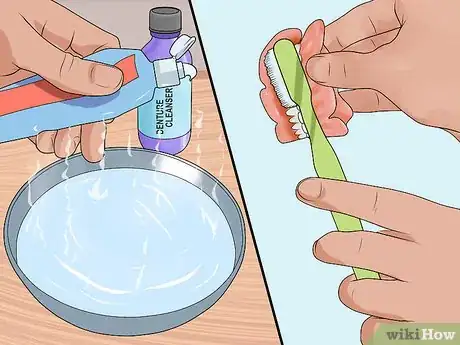
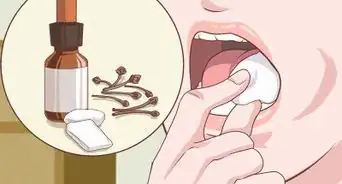
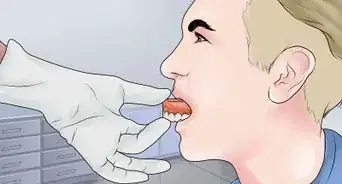
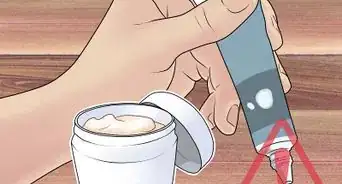

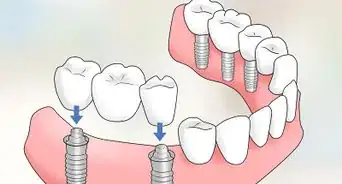



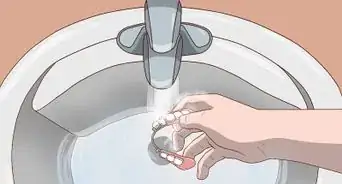
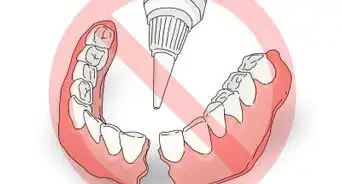
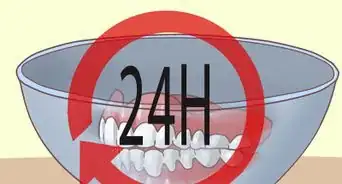












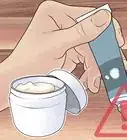




































Medical Disclaimer
The content of this article is not intended to be a substitute for professional medical advice, examination, diagnosis, or treatment. You should always contact your doctor or other qualified healthcare professional before starting, changing, or stopping any kind of health treatment.
Read More...